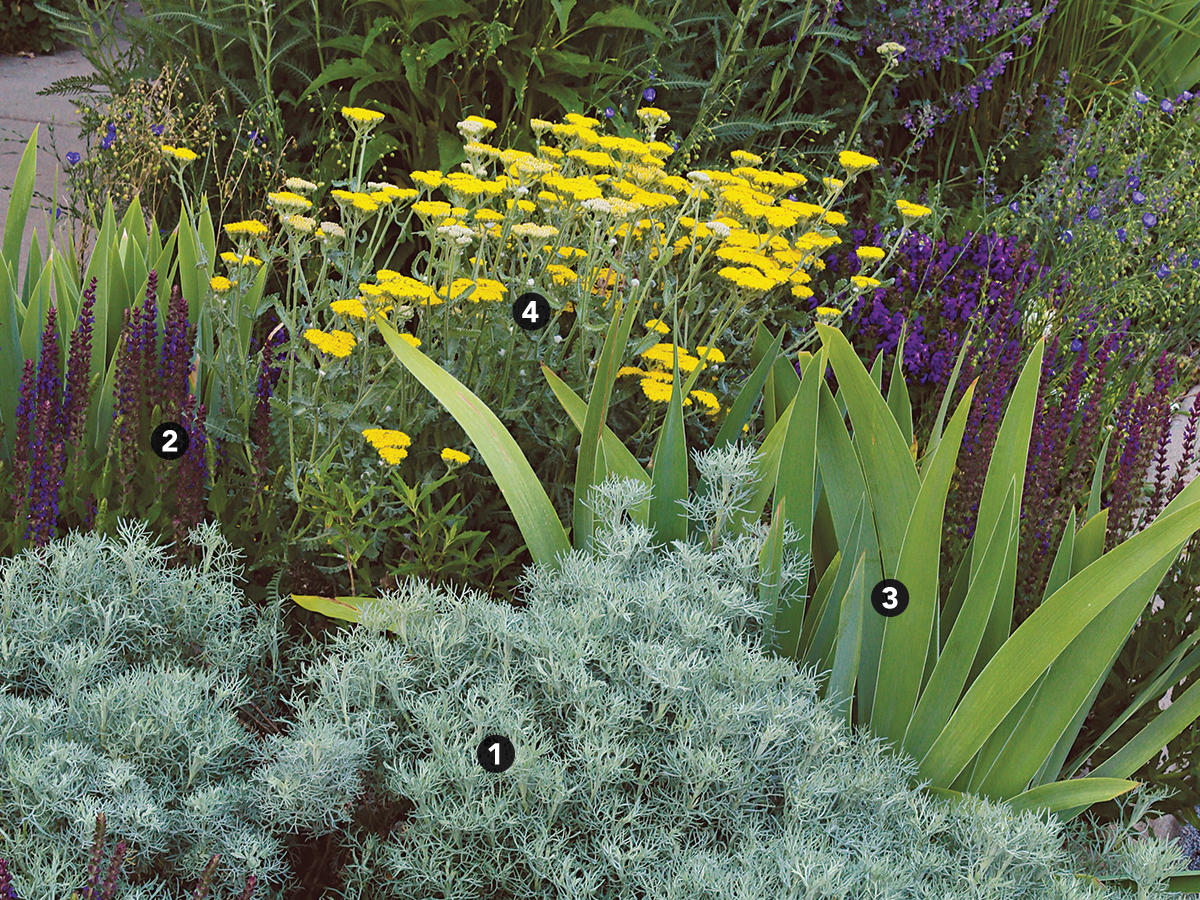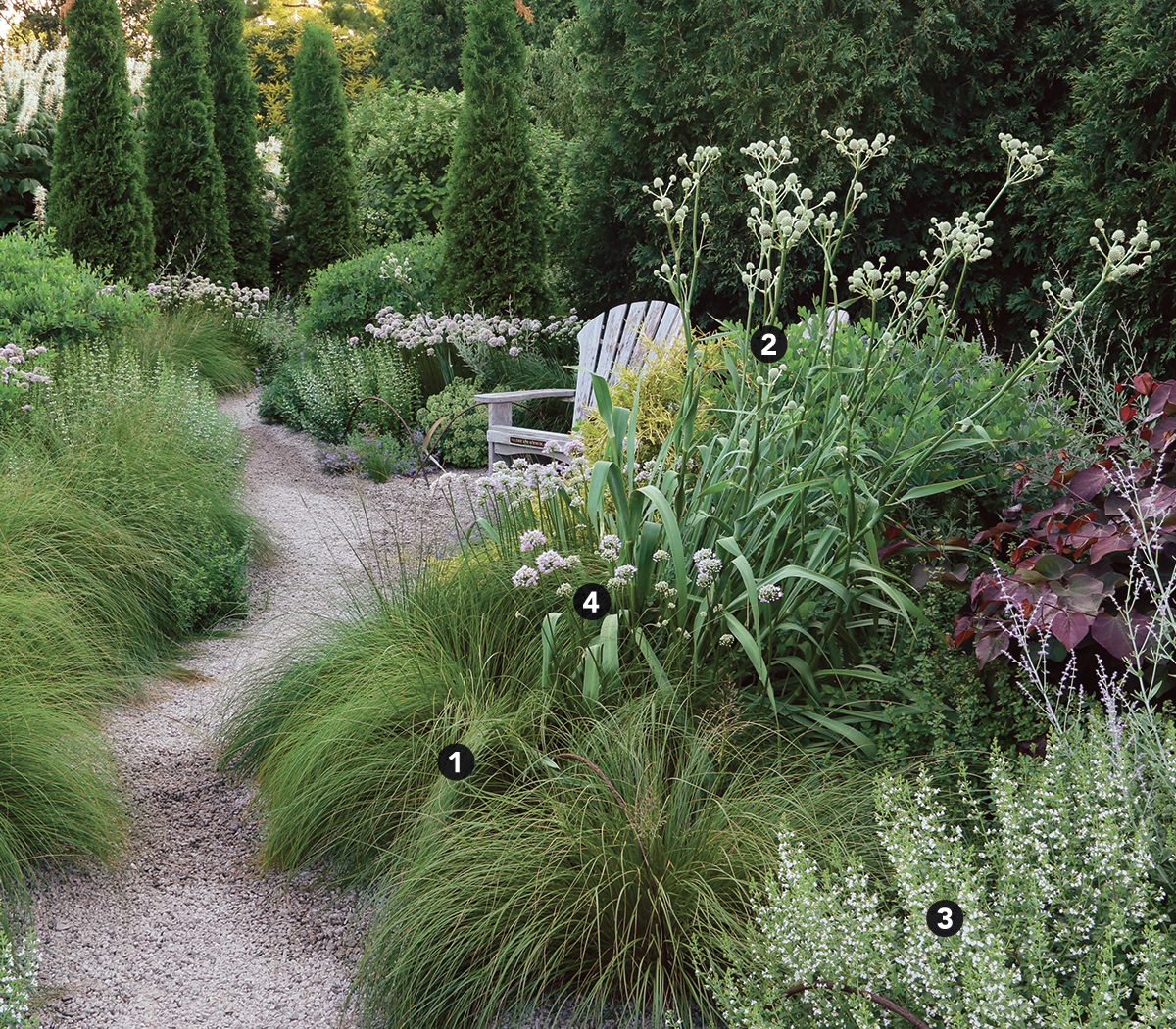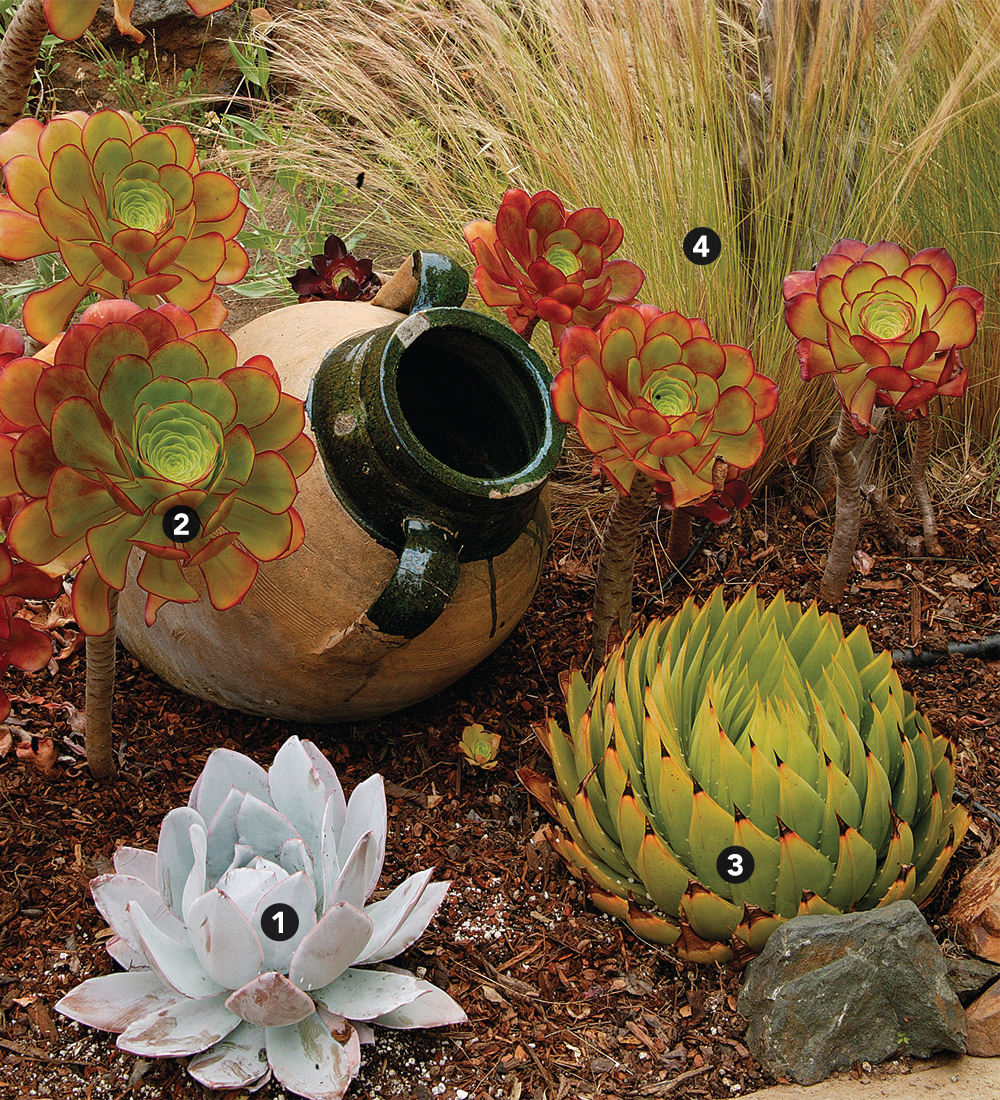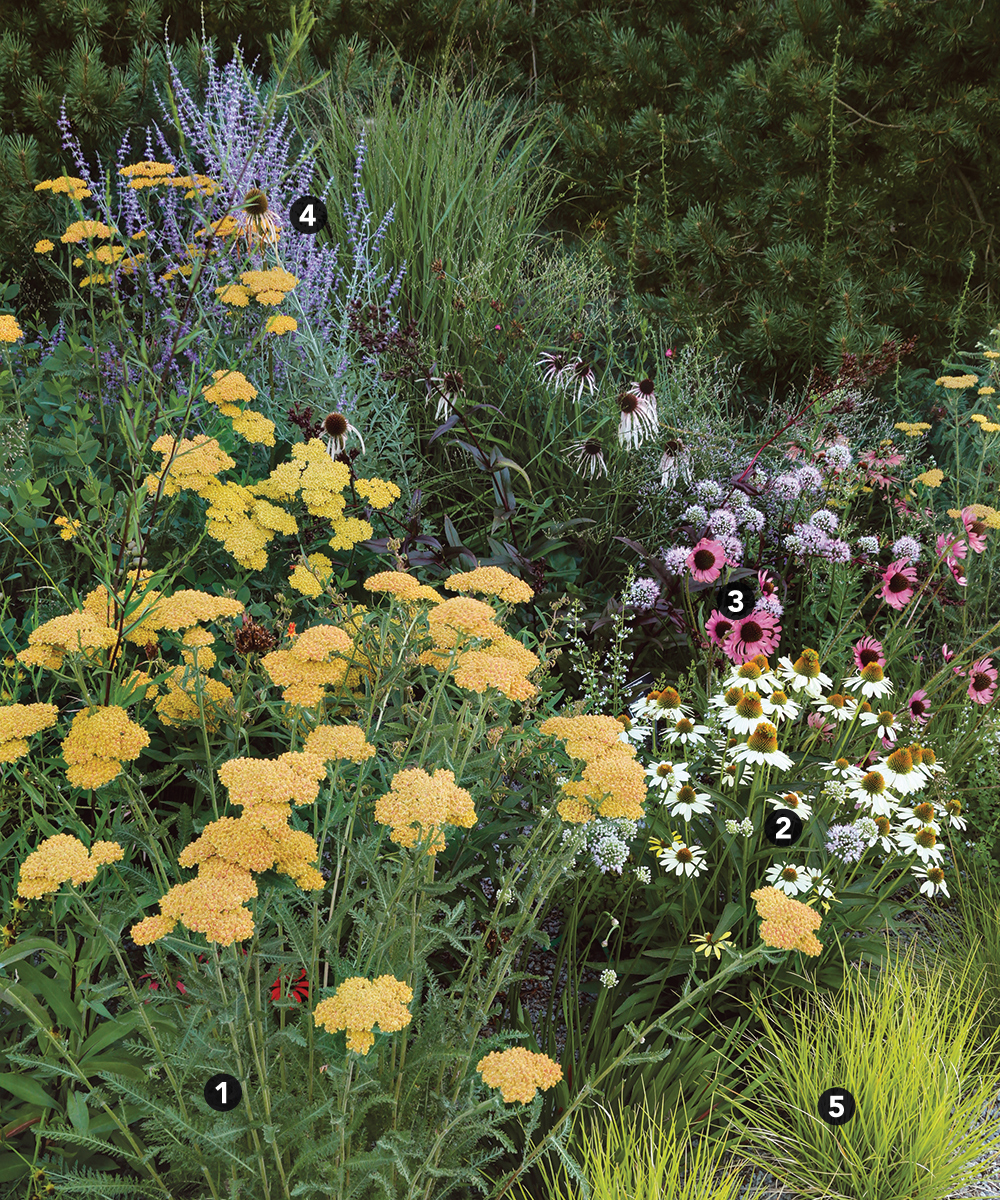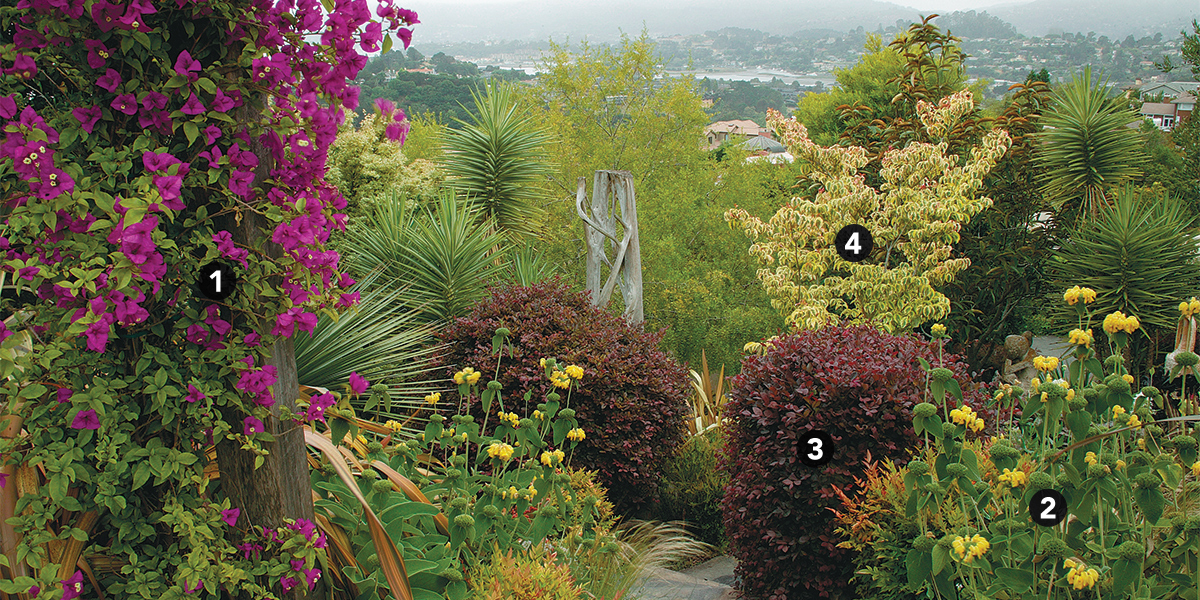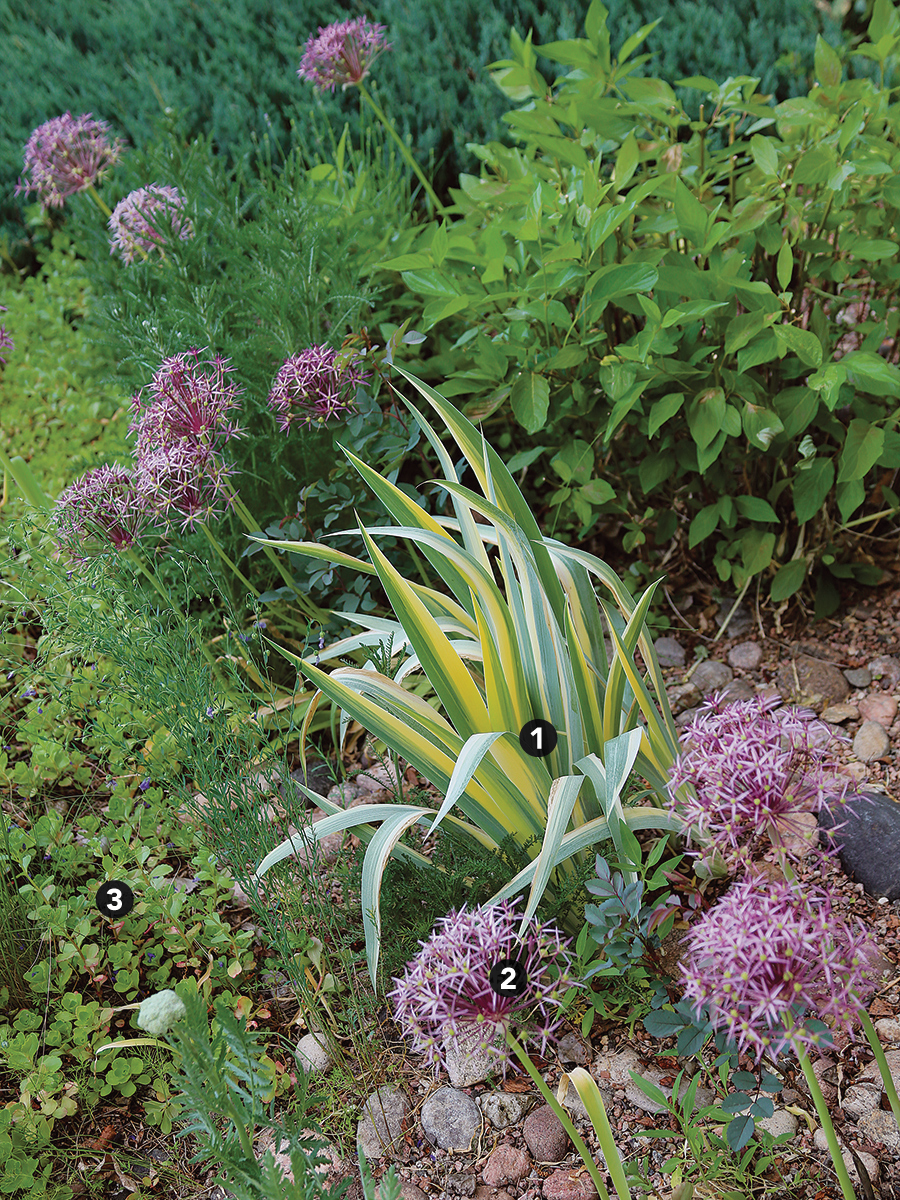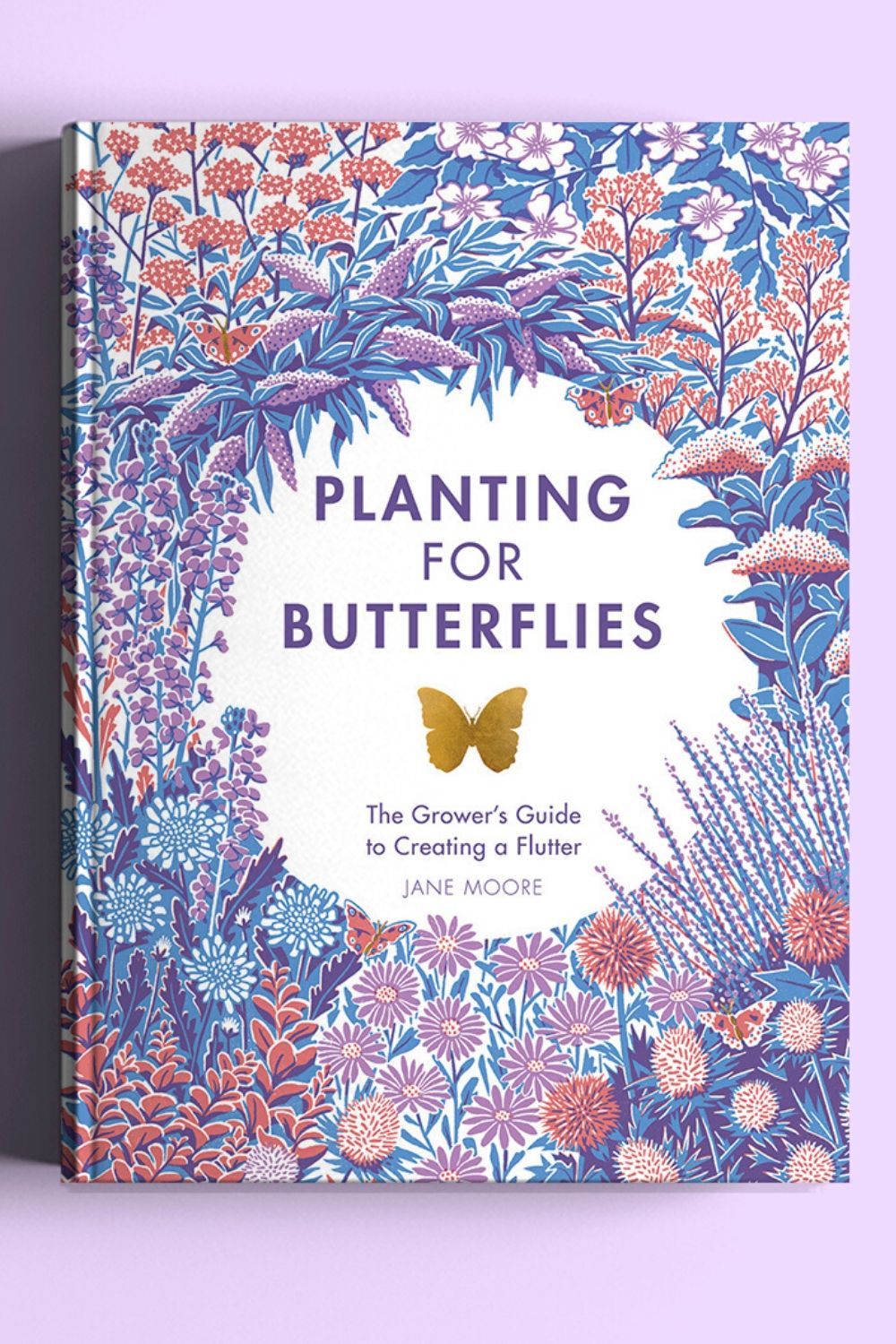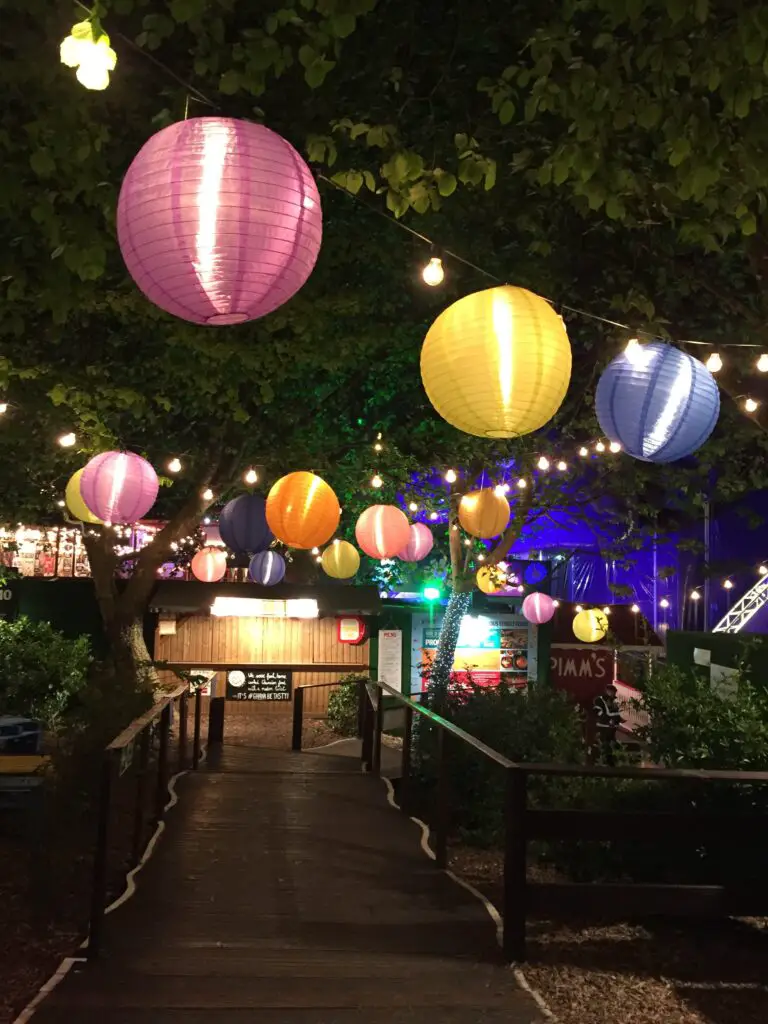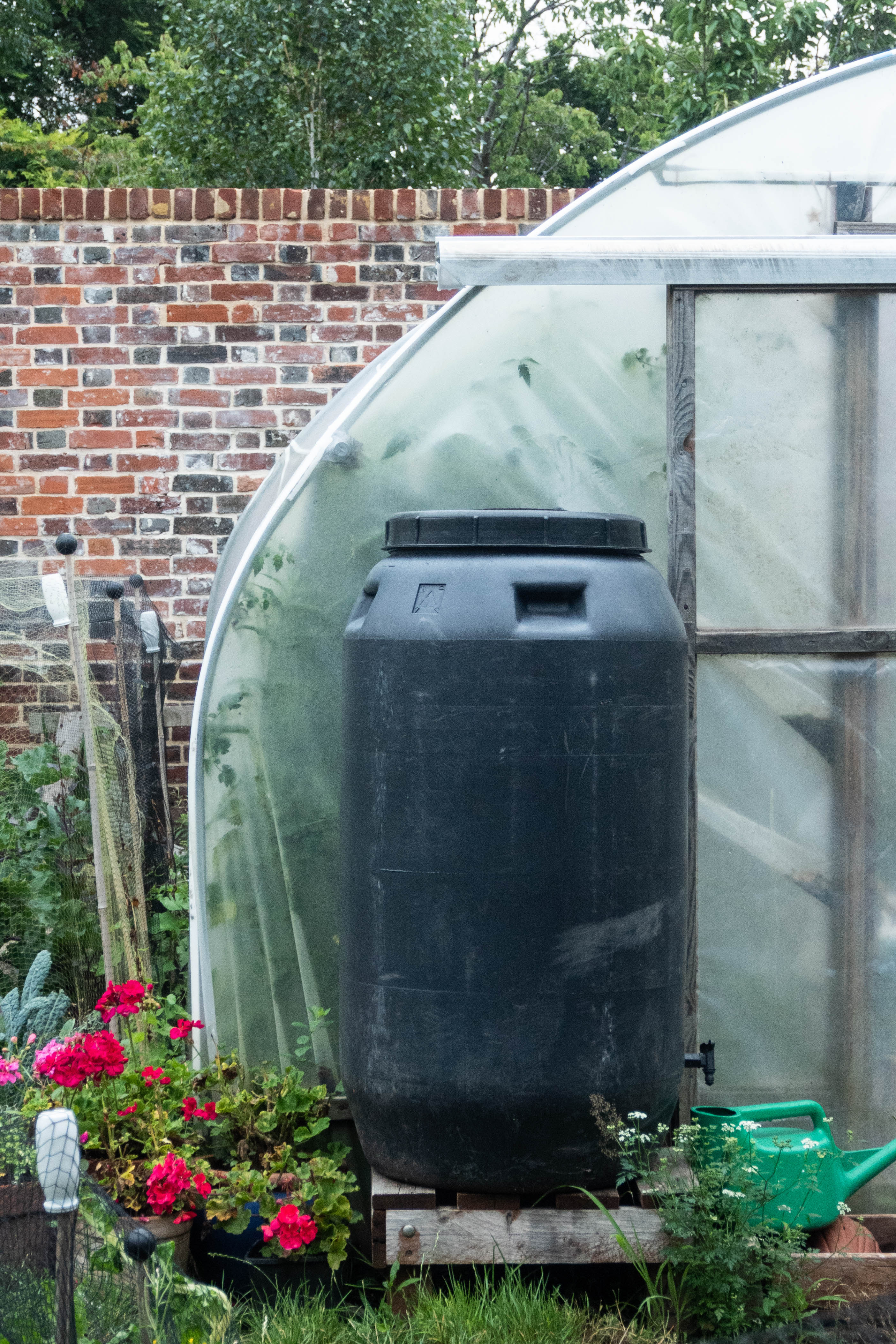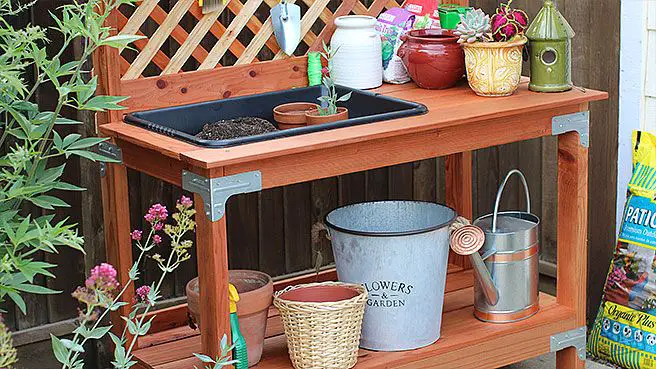Beautiful Drought-Tolerant Backyard Plans and Concepts
We watch The Climate Channel rather a lot in my family. There’s even a household joke that my husband missed his calling by not changing into a meteorologist. Almost each morning begins off with a cup of espresso and weatherman Jim Cantore within the background regaling us with what nook of North America is beneath a twister menace or is receiving the decidedly extra attention-grabbing “thunder snow.” Throughout most of final 12 months, although, the headline climate story was drought: drought within the Southeast, drought within the Midwest, and record-breaking drought within the West—which was so extreme that it sparked quite a few wildfires and precipitated water ranges in Lake Mead to drop to frighteningly low ranges. In accordance with the Nationwide Oceanic and Atmospheric Administration, file drought gripped a lot of the USA in 2022. This, in fact, put lots of our landscapes, which weren’t designed for drought, into hassle.
Drought is nothing new. For a lot of the final 23 years the Southwest has been coping with a “megadrought,” which not solely is predicted to persist however is more likely to intensify and develop east. As you will have already guessed, this lack of water has had implications for gardeners and landscapes. Crops that require fixed and constant moisture are not viable (or accountable) decisions for a lot of of our beds and borders. As a substitute, as temperatures rise and rain occasions change into scarcer, it’s good—from each an environmental and financial standpoint—to spend money on crops that may take it drier. Many people assume this implies transitioning their lush, leafy gardens into desert-like xeriscapes. That doesn’t need to be the case. Water-wise landscapes could be lush and overflowing with crops, however reaching that look requires making knowledgeable plant decisions. The next drought-tolerant designs supply inspiration in the event you’re trying to make use of much less water however not sacrifice any magnificence.
Design Technique 1 / Match the Plant Density to the House Dimension
The sq. footage will decide your drought-tolerant backyard plan
Drought-tolerant gardens are available in all sizes and styles. From a big, expansive mattress that runs the complete size of a property line to a small nook that bakes all day by the roadside, water-wise designs could be tailored to nearly any sq. footage. Simply keep in mind that crops compete for assets, so in the event you’re packing lots of them right into a tiny area, you’ll want to make sure that all of your alternatives require little or no water. In beds which are bigger and extra spaced out, you’ll be capable to incorporate crops which will want a bit extra moisture as a result of there will probably be extra room for the roots to stretch out and search it. The important thing to an attention-grabbing water-wise design is repetition and layering, simply as it’s in another kind of backyard.
For an average-size mattress, pay shut consideration to the stability
Each plant you buy has a tag that lists the anticipated top and width of that plant. That is meant to information you in spacing your alternatives. However we gardeners recurrently take these suggestions with a grain of salt, selecting as a substitute to position crops nearer collectively. Typically, that’s no large deal. However in a water-wise mattress, you need to comply with these spacing tips extra carefully so that you just keep away from making a patch that’s overly root sure (and due to this fact unable to retain a lot soil moisture). The realm pictured right here is 6 sq. toes and is simply planted with eight or so drought-tolerant perennials.
Key water-wise crops
- ‘Sea Foam’ artemisia (Artemisia versicolor ‘Sea Foam’, Zones 4–9)
- ‘East Friesland’ salvia (Salvia nemorosa ‘East Friesland’, Zones 4–7)
- Bearded iris (Iris × germanica cv., Zones 3–10)
- Yarrow (Achillea millefolium cv., Zones 3–9)
Bigger areas make bigger crops potential
One delusion about water-wise designs is that you just’re higher off counting on smaller crops with smaller root methods. That is solely partly true. When you’ve got a bigger mattress like this border, you should use some bigger crops (even bushes and shrubs) so long as you select drought-tolerant species and use them sparingly. Arborvitaes (Thuja spp. and cvs., Zones 3–9), for instance, maintain up fairly properly in dry circumstances as soon as established. Even many cumbersome perennials with intensive root methods—equivalent to alliums, calamints, and decorative grasses—are appropriate for dry gardens so long as they’ve the area to share assets.
Key water-wise crops
- Prairie dropseed (Sporobolus heterolepis, Zones 3–9)
- Rattlesnake grasp (Eryngium yuccifolium, Zones 4–9)
- Calamint (Calamintha nepeta subsp. nepeta, Zones 5–7)
- ‘Summer time Magnificence’ allium (Allium ‘Summer time Magnificence’, Zones 5–8)
Tip: “Native” doesn’t at all times imply “drought tolerant”
As a result of native crops are usually tailored to the pure circumstances of a specific area, many imagine that in areas liable to drought, native crops will probably be drought tolerant. However that’s not essentially true. Because the local weather adjustments over time, many native crops will probably be unable to thrive within the “new norm,” be it drier, wetter, hotter, or colder. Earlier than planting, perform a little research to determine a person plant’s threshold for drought reasonably than simply assuming that “native” is synonymous with “drought tolerant.”
Within the smallest spots, much less is extra
Not each dry backyard has the luxurious of infinite sq. footage. In spots equivalent to hellstrip plantings or full-sun crevices, that are ubiquitous in lots of city areas, you’ll want to make use of fewer crops which are actually robust as nails. Succulents, cacti, and even some smaller species of decorative grasses are good decisions right here, however make sure you area them liberally. Even desert natives will compete for what little water is accessible.
Key water-wise crops
- Echeveria (Echeveria cv., Zones 9–12)
- ‘Cyclops’ aeonium (Aeonium ‘Cyclops’, Zones 10–12)
- Spiral aloe (Aloe polyphylla, Zones 9–12)
- Mexican feather grass (Nassella tenuissima, Zones 7–11)
Design Technique 2 / Concentrate on Colour or Texture
Eye-catching traits take your beds to the following stage
For those who’ve ever searched “xeric backyard” on the web, you’re doubtless acquainted with the areas that dominate the pictures that pop up. These areas are often crammed with giant, fleshy succulents and cacti lined in fluffy spines. Robust, daring textures are commonplace in dry gardens due to crops like these. On the opposite facet of the spectrum, most of the herbaceous perennials that we lean on in drier circumstances could be extraordinarily floriferous and placed on a formidable present with their pink, blue, and good yellow blooms. One factor is for positive: Drought-tolerant designs are by no means missing
in focal-point crops, and the next are only a few attractive examples of crops that put colour and/or texture entrance and middle.
Related textures permit complementary hues to shine
Many of the crops on this gravel backyard are finely textured. The foliage is slim, typically bladelike, and exudes a tender look akin to feathers. This creates the proper staid backdrop for the assorted colourful blooms to pop. Yellow and purple are opposites on the colour wheel, so planting the golden-hued yarrow with the lilac Russian sage and plum-colored Tennessee coneflower creates hanging visible impression.
Key water-wise crops
- ‘Walter Funcke’ yarrow (Achillea millefolium ‘Walter Funcke’, Zones 3–9)
- ‘PowWow White’ coneflower (Echinacea purpurea ‘PowWow White’, Zones 4–9)
- Purple Tennessee coneflower (Echinacea tennesseenis, Zones 3–10)
- Russian sage (Salvia yangii, Zones 5–9)
- Autumn moor grass (Sesleria autumnalis, Zones 5–9)
A bonanza of colour and texture by no means fails to impress
It’s exhausting to determine what’s extra spectacular on this sizzling hillside backyard—the colourful colours or the daring textures. This area proves which you can mix crops with each eye-catching hues and standout foliage to nice impact. The treelike yuccas (Yucca cv., Zones 5–9) within the background have a rough but bushlike texture that contrasts with the tough leaves of Jerusalem sage. Pops of surprising magenta from the bougainvillea and moody purple from the Chinese language fringe flower foliage add drama to the complete scene.
Key water-wise crops
- Bougainvillea (Bougainvillea cv., Zones 9–11)
- Jerusalem sage (Phlomis russeliana, Zones 5–9)
- Chinese language fringe flower (Loropetalum chinense, Zones 7–9)
- ‘Cherokee Chief’ dogwood (Cornus florida ‘Cherokee Chief’, Zones 5–9)
Pair daring with effective for a foolproof combo
Sure, the streaked iris foliage and the tender amethyst allium blooms are pretty on this easy mixture. However what actually stands out is how the threadlike stems and filament-like flowers of the alliums distinction with the broad, easy leaves of the iris. It’s a texture mash-up that’s exhausting to look away from. In case your low-water spot can solely maintain a pair crops, choosing ones with contrasting textures is a recipe for fulfillment.
Key water-wise crops
- Gold variegated candy iris (Iris pallida ‘Aureo Variegata’, Zones 4–8)
- Large allium (Allium giganteum, Zones 4–9)
- Caucasian sedum (Sedum spurium, Zones 3–8)
Danielle Sherry is the chief editor.
Photographs: Danielle Sherry


